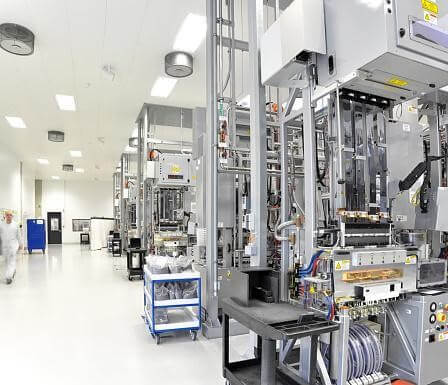In the manufacturing industry, workplace safety is paramount. Due to the array of heavy machinery on the factory floor, there can be many potential safety hazards that manufacturers must seek to resolve to prevent injury as well as disruptions in the production process.

However, organizations should realize that having a safe work floor can be extremely beneficial to the factory’s operations. A recent survey by Advanced Technology Services found that 83% of senior management and operations personnel experienced an increase in productivity due to the implementation of a safety program.
Although safety programs are multifaceted, a sizable component is ensuring that all machinery is outfitted with extensive safety measures. Plexiglass, also known as acrylic plastic, can help to accomplish this by acting as a powerful guard to avoid unintentional safety mishaps. Read on to learn more about why plexiglass should be a key part of your organizations’s safety program.
[wbcr_snippet id=”468″]The Importance of Safety in Manufacturing
Protecting employees from harm should always be a priority of manufacturers. On-the-job injuries are costly, demoralizing, and are overall extremely unfortunate for all parties involved. Although workplace injuries should be reduced, increased product demand often creates environments where safety incidents occur more frequently. This is partially due to attempting to process products faster, but also happens as a result of sheer increased product volume.
However, manufacturers do not only need to worry about injuries to their workers. There can also be damage done to products and machinery as a result of unforeseen mishaps. Resolving interruptions in a safe manner can cause a major delay in production, costing organizations time and money. To reduce the negative influence of external factors within your factory, it’s vital to prioritize securing machinery. This will assist in providing smooth processes, reduced expenses, and long-term safety for employees.
Why Plexiglass is Ideal for Manufacturing
Plexiglass is unmatched in its ability to act as an effective barrier in manufacturing. As a guard, it will prevent operators from touching or getting snagged on dangerous points of operation. Not only will it provide this basic barrier, it will also do so with the utmost clarity. This way, your factory’s work process will not be hindered, while preventing operators from using dangerous workarounds to achieve greater visibility of the equipment. For this reason, OSHA has even recommended Plexiglass as an ideal barrier material.
Due to many inherent factors, plexiglass far surpasses the utility of glass as a guard. Just like glass, plexiglass transmits light through its high clarity. However, plexiglass is eleven times stronger than glass while only weighing half as much. Even plexiglass guard is broken, it is completely shatterproof. Meanwhile, glass shatters dramatically upon impact, breaking into sharp shards that could create a safety hazard. Unlike glass, plexiglass is also cost effective to order in customized shapes and sizes due to its ability to be thermoformed and laser cut.
Plexiglass has additional hardy properties that make it ideal for long-term use in a manufacturing setting. It is inherently scratch resistant, but any light scratches that occur can be buffed out. If scratch prevention is a priority, Plexiglass can also be outfitted with a scratch resistant coating for extra protection. Another feature that extends the life of plexiglass is its resistance to UV damage. Unlike other clear plastics, plexiglass will stay clear for decades without yellowing or turning brittle due to this resistance.
How to Use Plexiglass for Safety
When seeking to implement plexiglass within your factory, it’s important to ensure it’s being utilized effectively. First, focus on properly identifying the areas that need increased safety. If there is a machine that has already been jammed or been the cause of an injury, those safety barriers must be fulfilled with haste. However, any safety incident should encourage an evaluation of the factory floor to prevent any future incidents. While contracting a third party can be very valuable, consider looking within your organization for safety suggestions. Ask operators on the factory floor if there are any existing safety concerns with machinery, such as “near miss” reports. Since operators work with the machinery regularly, they will likely be intimately familiar with areas that could use safety improvements.
When it comes time to install your plexiglass guards, ensure that the installation will be done by a qualified professional. While having an amateur implement safety measures will save costs in the short term, they may not have all technical knowledge to ensure that the plexiglass guards are securely installed. For example, plexiglass guards should be deliberately installed so they cannot be removed without a special tool. By avoiding a shoddy, unprofessional installation, manufacturers can avoid future safety hazards.
Key Takeaways
By taking measures to secure the more dangerous aspects of manufacturing machinery, organizations can save costs, avoid worker injuries, and ensure the factory production runs smoothly. Plexiglass is a cost-effective way to accomplish just that. By being proactive about workplace safety, your organization will remain highly productive and competitive in today’s challenging marketplace.
Ready to use plexiglass to ensure the safety of your manufacturing facility? Take a closer look at our acrylic plastic offerings, or contact us to learn more about customized plexiglass offerings.

